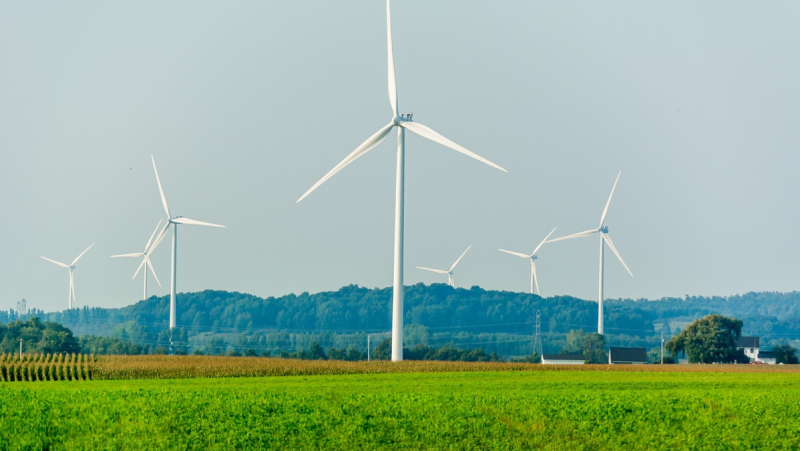Energy supply financing ratios: the next milestone in banks’ climate strategy

To adopt a credible climate strategy, banks must now incorporate this ratio and align their energy financing with the needs of the transition. Now assessed through a dedicated criterion in the Sustainable Power Policy Tracker, the analysis of this ratio has a simple goal: to ensure that banks commit to supporting the decarbonization of electricity through their financing activities.
According to projections by the International Energy Agency (IEA), global electricity production must be fully decarbonized by 2040 to limit global warming to 1.5°C. Restricting financing for fossil fuels is a crucial first step toward achieving this goal, but it is not enough. A complete transformation of the energy system also requires a massive increase in financing for sustainable alternatives. These investments must replace fossil fuel financing, not add to it.
In concrete terms, by 2030, for every dollar invested annually in fossil fuels, six dollars must be invested in sustainable energy supply (1) – primarily in electricity. This translates to a 6:1 ratio.
A widely recognized key indicator
Since 2023, the IEA has highlighted the importance of financing ratios in its reports to illustrate the necessary investments to follow the trajectory of its “Net Zero Emissions by 2050” (NZE) scenario (2) Moreover, the Science Based Targets initiative (SBTi) recommends that financial actors increase their annual ratios to meet the IEA’s 2030 target. (3)
Bloomberg New Energy Finance (BNEF) has also emphasized the importance of banks’ energy sector financing ratios in a comprehensive study. (4) More recently, the World Resources Institute integrated this ratio into its “Net Zero Tracker” for financial institutions, evaluating “green” financing in relation to fossil fuel financing. (5) Meanwhile, the Institute of International Finance (6) and the Institut de la Finance Durable (7) have highlighted it in their publications, further reinforcing its relevance.
Banks themselves are beginning to adopt this ratio. Following agreements with the New York City pension fund and the NYC Comptroller, Royal Bank of Canada, Citi, and JPMorgan have committed to publishing their “clean to fossil” ratio by 2025. (8) Additionally, BNP Paribas has already published its ratio for 2023 and set a ratio target to be achieved by 2030. (9)
However, it is essential to adopt a rigorous methodology to prevent this ratio from becoming a greenwashing tool. While current methodological approaches, like BNP Paribas’s, have their limitations, they confirm that the energy financing ratio is a crucial indicator for any bank seeking to develop a coherent climate strategy.
Valuing commitments based on the financing ratio
Created in 2023, the Sustainable Power Policy Tracker analyzes the commitments made by the world’s 60 largest banks in supporting sustainable energy. With this update, banks that incorporate an energy supply financing ratio into their commitments are now better rated thanks to a new dedicated evaluation criterion. However, simply publishing the ratio is welcome but not enough: setting a medium-term target is necessary to achieve a better score. Banks can then improve their score by broadening the scope of financial products included (such as bond issuances) in the ratio calculation and covering the entire fossil fuel value chain.
According to our evaluation, only Santander and BNP Paribas are disclosing their ratio in 2024. Moreover, although its ratio calculation method needs to be strengthened, BNP Paribas is the only bank to have set a ratio target for 2030.
Additionally, the tracker has enhanced its criteria concerning financial targets dedicated to transforming the power supply system, the definition of the scope of energy sources and technologies financed, and the transparency of published data. Finally, regarding fossil fuel financing, it now specifically focuses on restrictions on fossil fuels in the power generation sector. Thus, banks that limit their financing for coal and gas power plants are better rewarded for their efforts.
Although several financial players have adopted robust policies regarding fossil fuels, none have yet turned this into consistent action by applying the same level of coherence to their financing of sustainable electricity. To do so, Reclaim Finance encourages banks to adopt dedicated financing targets to accelerate the deployment of sustainable electricity supply and to commit to achieving an energy supply financing ratio of 6:1 by 2030.
Notes:
- Power supply covers power generation, storage, transmission and distribution.
- IEA, World Energy Outlook 2023; IEA, Net Zero Roadmap update; IEA, The Oil and Gas Industry in Net Zero Transitions, 2023
- SBTi, Financial sector near-term science-based targets explanatory document, May 2024
- BNEF, Energy Supply Investment and Bank-Facilitated Financing Ratios 2022, December 2023
- WRI, Financial Institutions Net Zero Tracker, August 2024
- IIF, White paper on ESR disclosure, September 2024
- IFD, Analyse des trajectoires compatibles avec un scénario 1.5°C, June 2024
- Bloomberg, online article, April 2024
- BNP Paribas, press release, February 2024
This blog was originally published on Reclaim Finance's website here.
